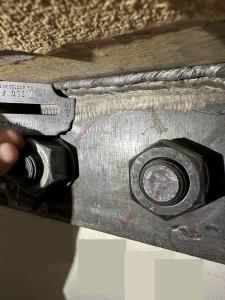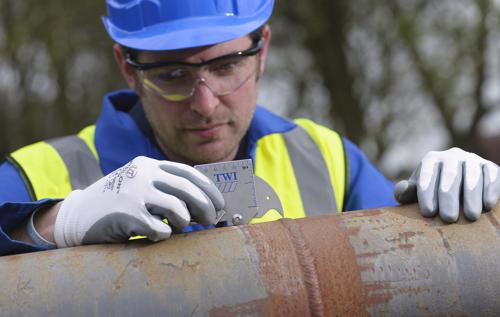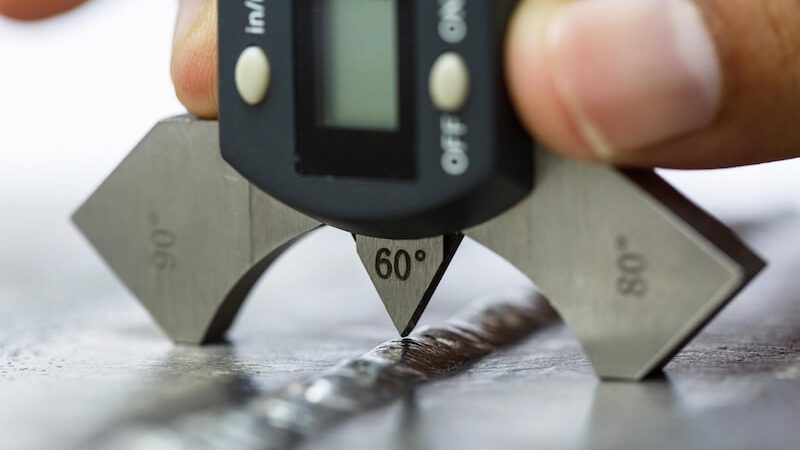A Comprehensive Guide to Welding Examination: Comprehending Criteria, Techniques, and Best Practices for Quality Control
Welding examination plays an essential duty in making certain the architectural integrity and safety of welded components, necessitating a complete understanding of sector standards such as those developed by AWS and ASME. As we check out these critical components, it comes to be apparent that the implications of welding assessment extend far past conformity, welcoming a better assessment of how these procedures form industry standards and methods.
Relevance of Welding Evaluation
Welding inspection plays a vital function in guaranteeing the stability and security of bonded structures. It is a vital procedure that confirms that welds comply with predefined specifications, which is important in different sectors, consisting of building and construction, automotive, and aerospace. By conducting extensive evaluations, possible flaws such as fractures, insufficient fusion, and porosity can be determined early, protecting against catastrophic failures that might bring about mishaps or pricey repair services.
The value of welding examination prolongs past plain conformity with policies; it likewise fosters trust with stakeholders. Clients and regulative bodies anticipate guarantee that the frameworks they rely upon are constructed to withstand functional stresses. Reliable welding inspection methods add to lasting sturdiness and performance of the frameworks, ultimately leading to decreased maintenance costs.
Additionally, welding inspection advertises a culture of top quality within organizations, urging adherence to ideal methods and constant improvement. By integrating examination procedures right into the welding process, firms can boost their online reputation and establish themselves as leaders in quality control. To conclude, the relevance of welding evaluation exists in its capacity to guard lives, make certain architectural reliability, and support sector requirements, making it an important element of welding operations.
Key Industry Specifications
Ensuring compliance with key industry standards is crucial for preserving the top quality and safety of bonded structures. Numerous companies establish these standards to promote ideal techniques in welding and examination - Welding Inspection Gilbert Arizona. Amongst one of the most acknowledged are the American Welding Society (AWS) and the American Culture of Mechanical Designers (ASME), which give detailed guidelines and requirements for welding procedures and examination criteria
AWS criteria, such as AWS D1.1 for structural welding, synopsis demands for products, layout, and screening to make sure the integrity of welds. ASME codes, including ASME Section IX, regulate the credentials of welders and welding treatments, guaranteeing consistent high quality in commercial applications. Internationally, the ISO 3834 basic stresses high quality needs for fusion welding, supplying a structure for companies to show compliance with global finest methods.
Conformity with these requirements not only improves the dependability of welded structures yet also minimizes threats associated with structural failings. Additionally, adherence to sector standards is usually a prerequisite for regulatory approvals and can substantially influence project specifications. Inevitably, understanding and executing these crucial requirements are crucial for reliable welding evaluation and quality assurance.
Evaluation Techniques Overview
Reliable welding inspection relies upon a selection of techniques made to examine the high quality and honesty of welds. These methods can be extensively classified into non-destructive and damaging screening (NDT) methods. Non-destructive testing strategies, which are widely preferred in the industry, permit the examination of welds without compromising the integrity of the product.

Amongst one of the most generally made use of NDT methods are visual examination, ultrasonic screening, radiographic screening, and magnetic bit testing. Visual assessment is often the very first step in the evaluation process, making it possible for this website assessors to recognize surface imperfections and assess weld grain accounts. Ultrasonic screening uses high-frequency audio waves to detect internal problems and measure the thickness of welds. Radiographic screening involves making use of X-ray or gamma-ray imaging to expose inner problems, while magnetic particle testing is effective for detecting surface and near-surface stoppages in ferromagnetic products.
Each method has its own benefits and constraints, making it important for inspectors to select one of the most proper technique based on the certain requirements of the task, the materials included, and the urgency of the welds being checked. This cautious selection promotes and makes certain comprehensive assessments safety and security and top quality requirements in welding operations.
Common Issues and Their Effects
A complete understanding of usual defects in welds is vital for maintaining structural honesty and security in bonded constructions. Welding flaws can significantly jeopardize the mechanical properties of the joint, resulting in failures that might jeopardize both employees and equipment.
Typical issues include porosity, which materializes as tiny gas pockets trapped in the weld metal, damaging the overall framework. Splitting is another prevalent problem, frequently resulting he has a good point from quick air conditioning or incorrect joint style, bring about stress concentrations that can lead to disastrous failings. Insufficient blend occurs when the weld steel stops working to effectively bond with the base material, producing weak factors that may lead to splitting up under tons.
Other notable issues include undercutting, where the weld grain wears down the base steel, and slag inclusions, which can impede the weld's strength. Each of these defects has certain effects; as an example, porosity can minimize ductility, while fracturing directly influences tensile strength. Determining and understanding these problems during inspection is essential for guaranteeing and carrying out rehabilitative procedures compliance with market criteria, inevitably protecting the structural stability of welded assemblies.
Ideal Practices for Quality Control
Executing ideal methods for quality control in welding processes is essential for achieving optimum results and decreasing issues. One important technique is the establishment of clear welding treatments that comply with market requirements and specs. These procedures ought to include in-depth directions concerning product selection, joint preparation, and welding techniques to make sure uniformity and quality.
Regular training and qualification of welding employees are additionally vital. Knowledgeable welders that understand the importance of top quality assurance are more most likely to create audio welds. In addition, carrying out a robust assessment program, including both visual and non-destructive screening (NDT), can aid identify problems early while doing so, enabling for prompt restorative activities.

Lastly, fostering a culture of high quality within the company encourages staff members to focus on high quality in their work. By adhering to these finest techniques, companies can improve the honesty of their welding processes, ultimately resulting in enhanced product quality and lowered costs connected with rework and repairs.

Conclusion
Finally, welding examination plays an important function in making sure the honesty and safety and security of bonded structures. Adherence to vital market requirements, such as those developed by AWS and ASME, is crucial for efficient high quality assurance. Using various examination techniques enables the recognition of typical problems, therefore reducing possible threats. By applying finest techniques, companies can improve integrity, lessen maintenance costs, and grow trust fund among customers, ultimately adding to effective welding operations - Welding Inspection Gilbert Arizona.
In addition, welding assessment advertises a society of high quality within organizations, motivating adherence to best practices and constant improvement. In conclusion, the importance of welding examination exists in its capacity to secure lives, make sure structural integrity, and promote sector standards, making it an important element of welding procedures.
Among the most identified are the American Welding Culture (AWS) and the American Society of Mechanical Engineers (ASME), which give thorough standards and specs for welding processes and assessment standards.
Eventually, understanding and executing these vital requirements are important for effective welding evaluation and quality assurance.
Effective welding evaluation counts on a range of techniques developed to examine the high quality and stability of welds.